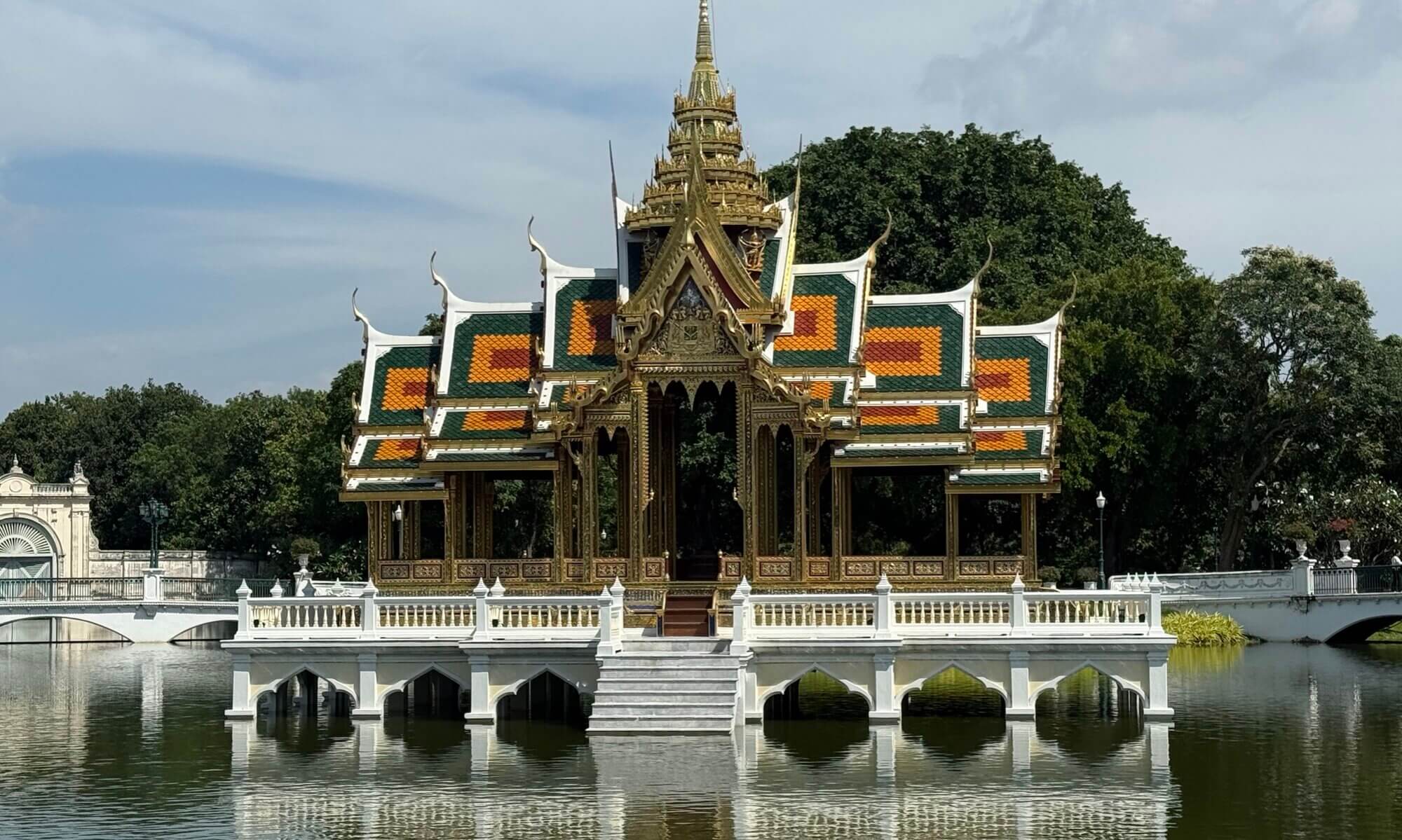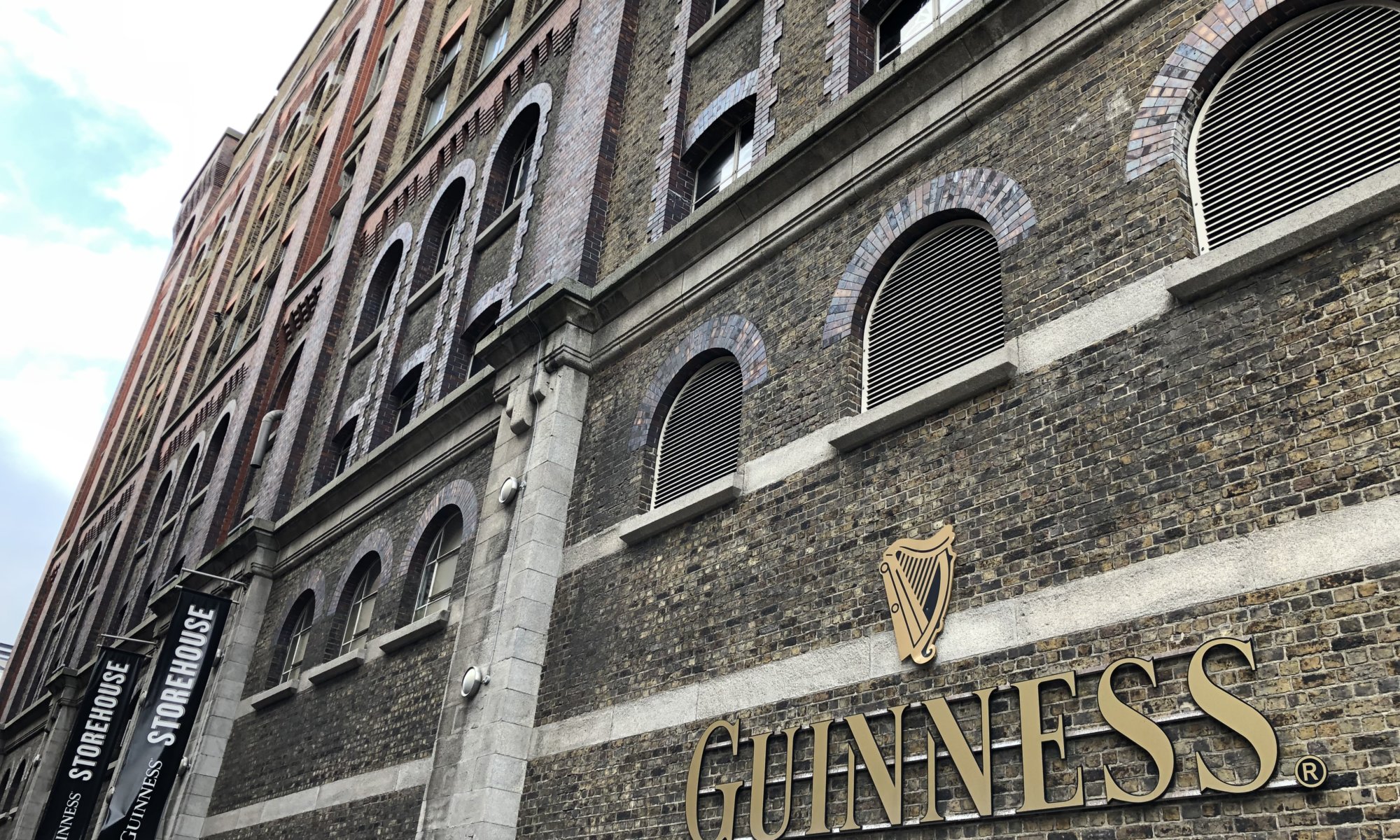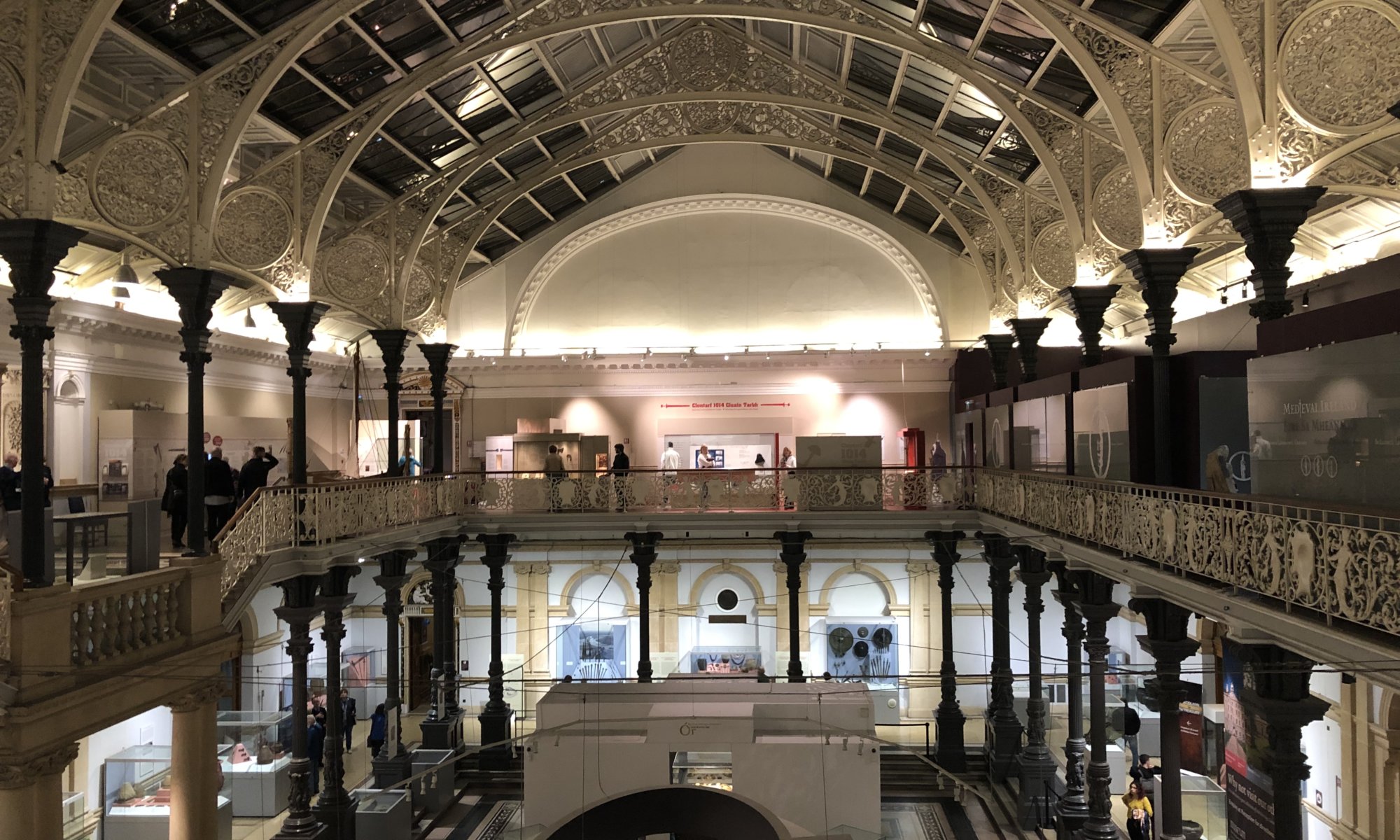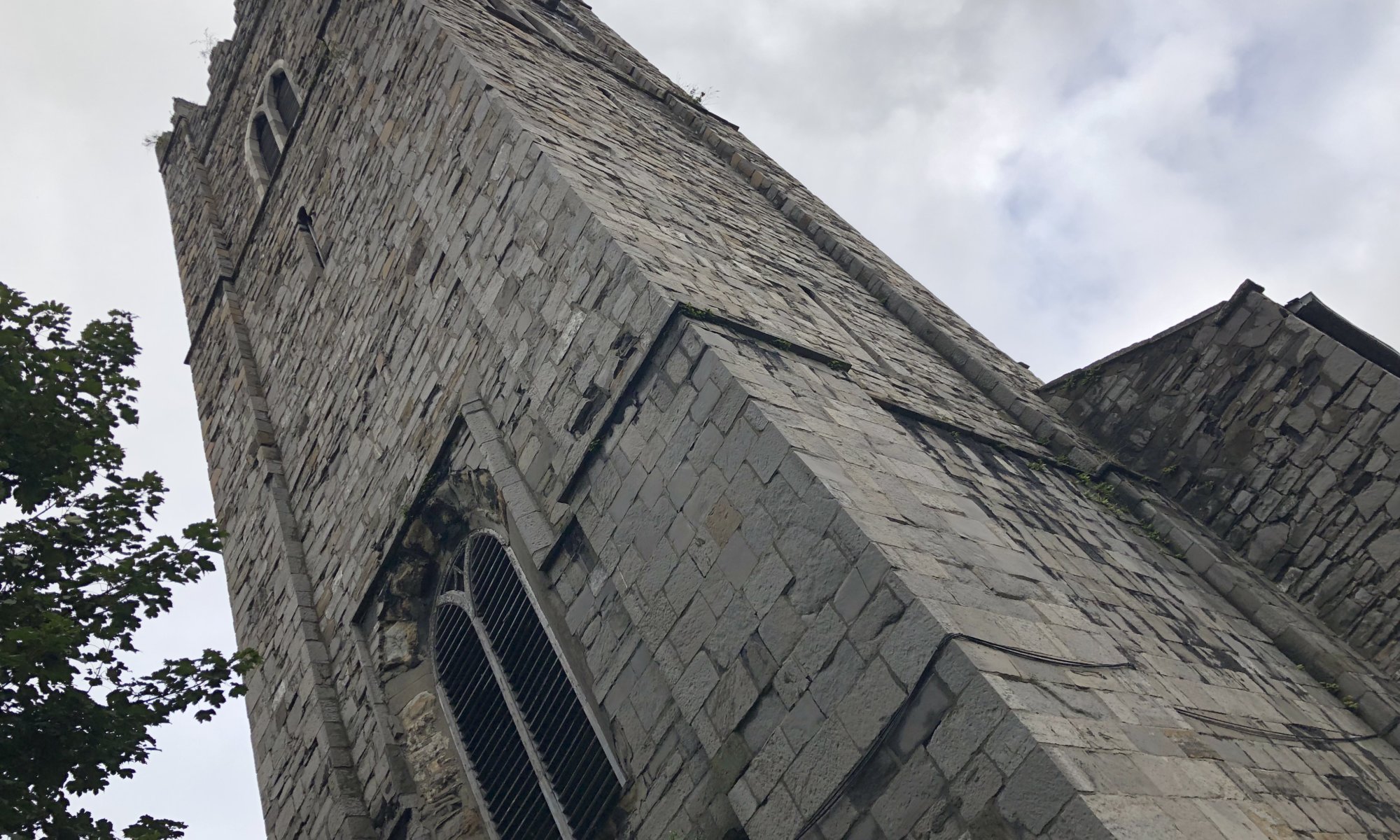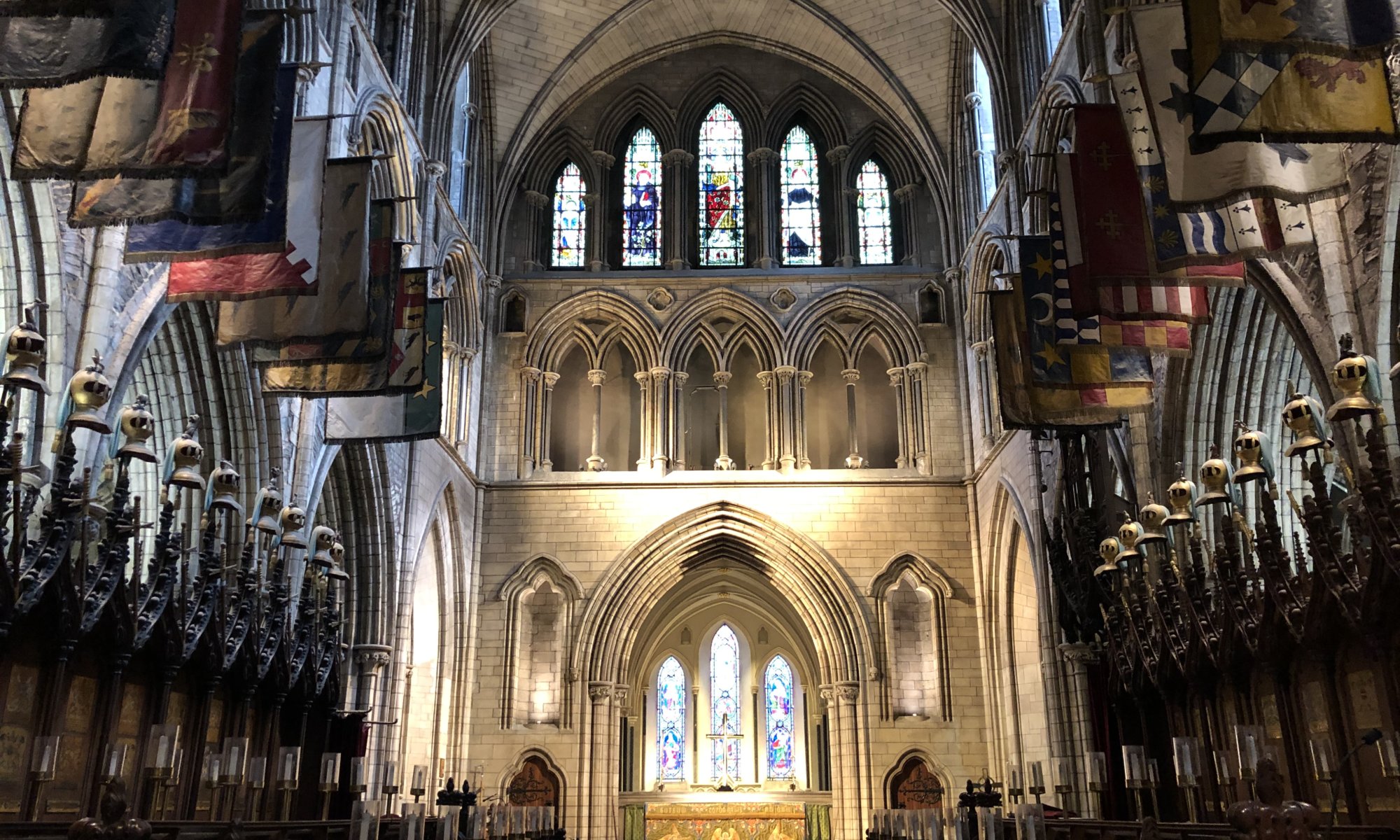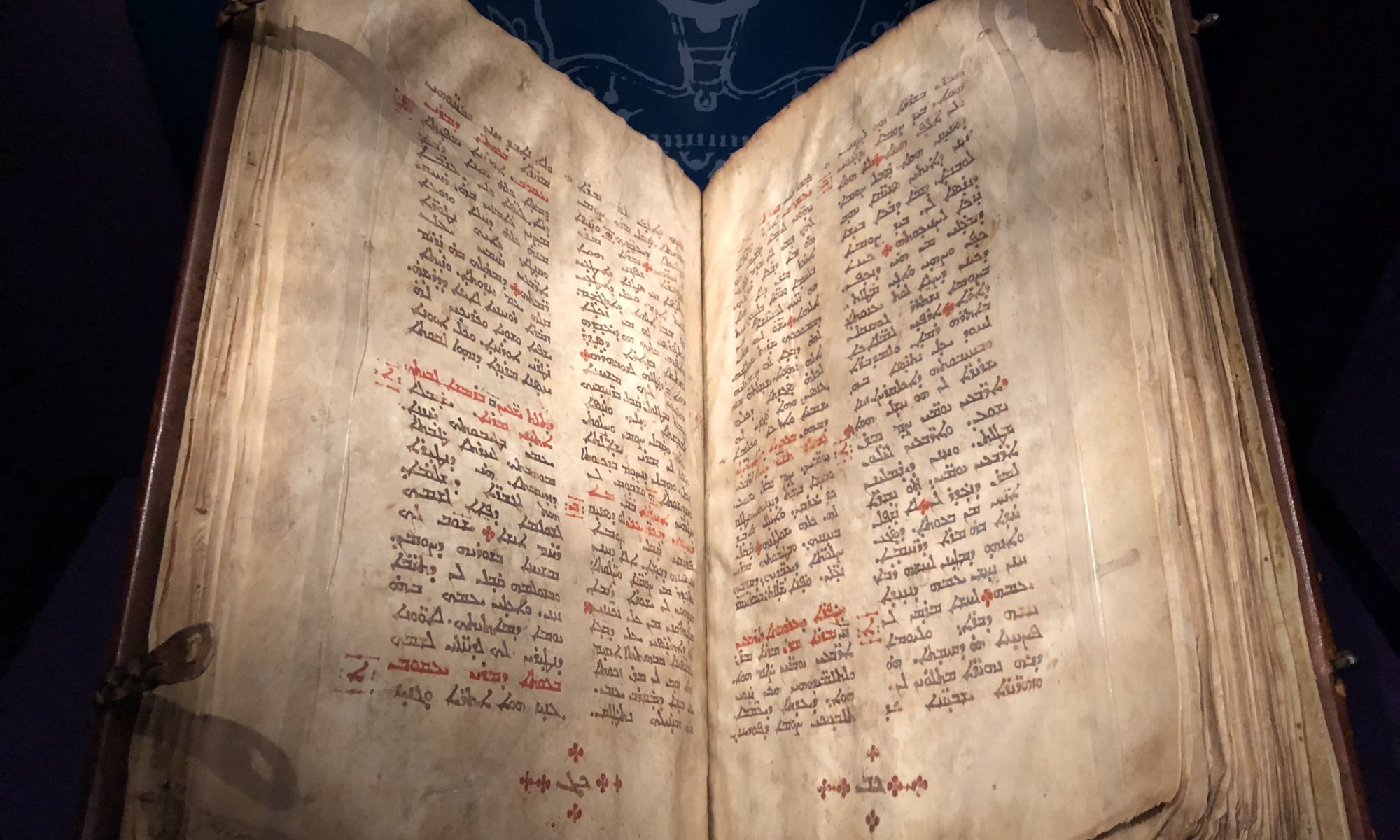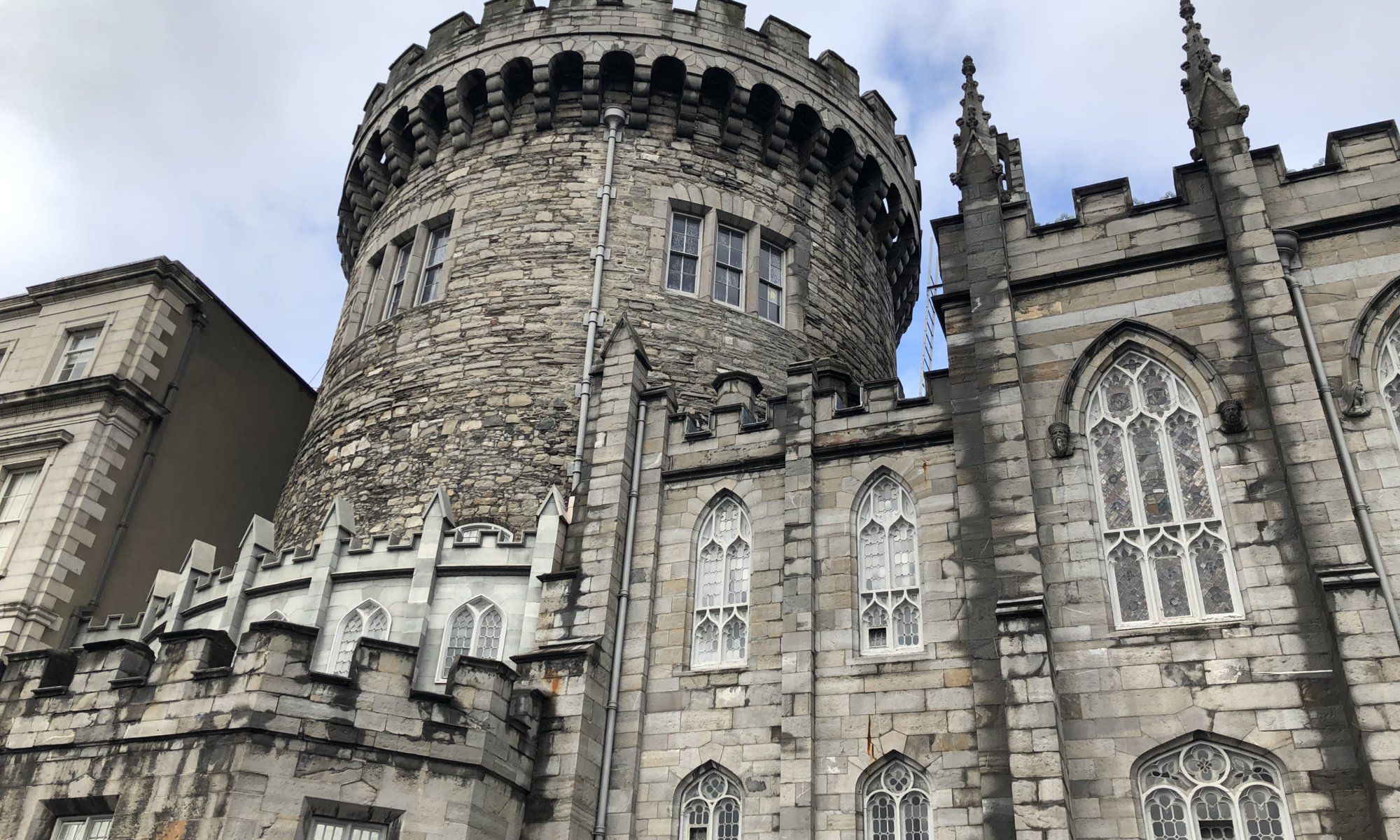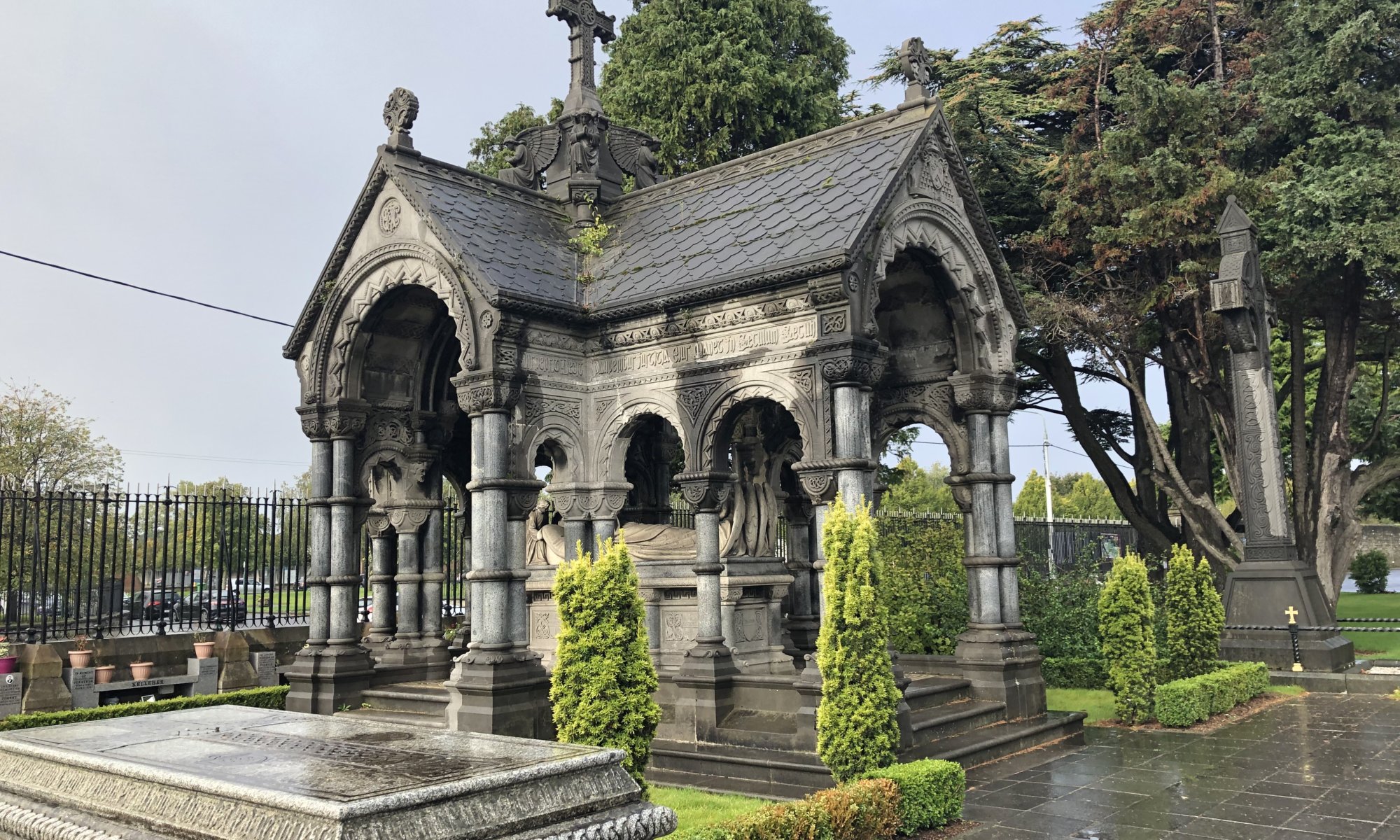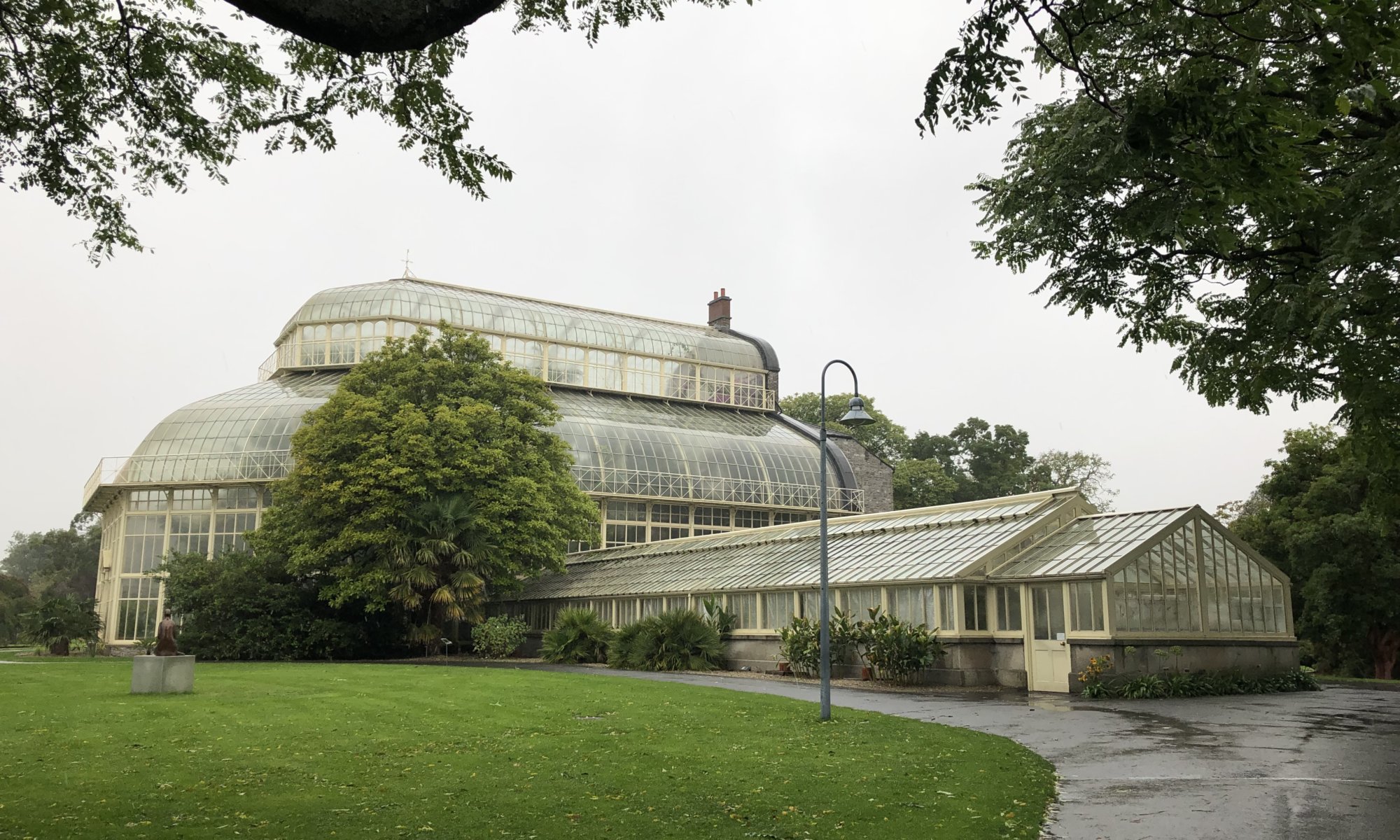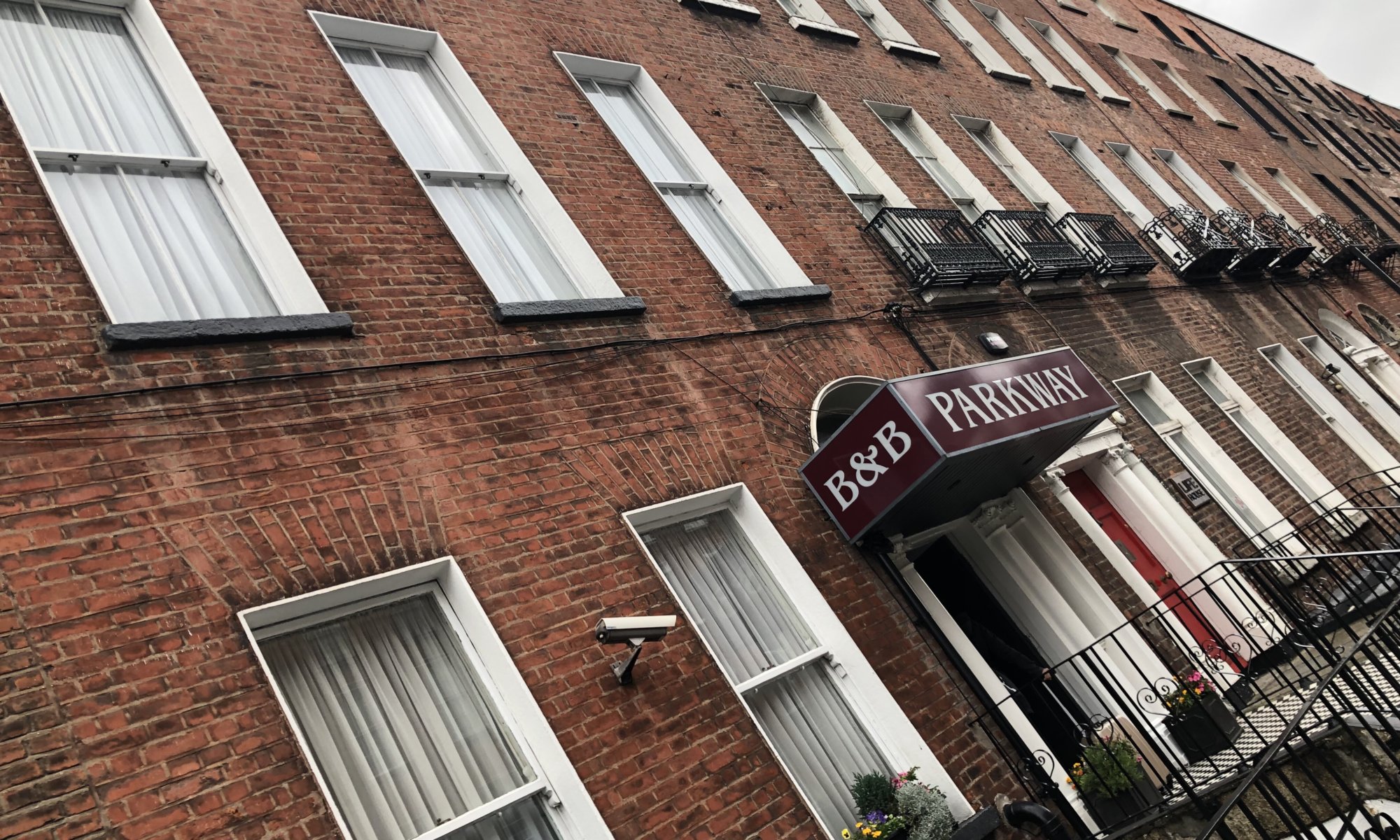There is one thing everybody does when travelling to Dublin, Ireland: a visit to the Guinness Storehouse, the original place (St. James’s Gate) where this special stout was invented and produced. It is not a museum nor a bar – it is a continuous event for the masses. The exhibition is organized to welcome many spectators and you’re inside a neverending flow of persons that enjoy the edutainment served here: from the ingredients in the basis, over the production process to the roof bar where you get a beer with your ticket.
Continue reading “Lovely day for a Guinness”National museum
If you like to learn something about the past you’ve got many good options in Dublin, Ireland. The capital city is rich of national museums which don’t charge an entrance fee and it’s worth to have a look into all of them. The National Museum of Ireland has an archaeological section in Kildare street where you also can learn about the influence of the Vikings. Many ancient treasures of all ages are on display.
Continue reading “National museum”Mummification
St. Michan‘s church in Dublin, Irland, is something special. At its location a Danish chapel from 1095 was standing, the current building looking a bit like a ruin is dating back to the year 1668. Since the Victorian times, people get here to visit the vaults underneath – even Bram Stoker, the author of Dracula is said to have visited them. The reason for that is a bit spooky: inside the vaults, you can find corpses from the 17th to the 19th century. But they didn’t deteriorate normally, they didn’t become dust – they mummified without human help.
Continue reading “Mummification”St. Patrick‘s cathedral
It is said that at the location of the beautiful St. Patrick’s cathedral in Dublin, Ireland, in the year 450 a spring existed in which Saint Patrick baptised new believers. Later a wooden chapel was built there and from 1191 on it became what it is today: the largest church of Ireland. It is 91 meters long and the tower has a height of 43 meters. In 1860 massive restoration works were necessary, financed by Benjamin Guinness (you know his profession). Most parts of the walls and decorations, therefore, come from the Victorian age.
Continue reading “St. Patrick‘s cathedral”The Art of Making Books
The US-American industrial Sir Alfred Chester Beatty had an interesting hobby: how collected old books, book fragments and papyri. His collection is today on display in the Chester Beatty Library at Dublin, Ireland – located within Dublin castle. The very well-designed and modern museum dates back to the year 1950 and contains many beautiful and important books from all around the world. Most of them are religious, some secularistic.
Continue reading “The Art of Making Books”Dublin castle
If you’re looking out for Dublin castle at Dublin, Ireland, don’t expect a castle standing separated somewhere on a hill. The wonderful ancient structures are integrated into a complex of buildings and you need to search a little bit to find them. In this location already in the 10th century, a fortress was built – but the buildings existing there today date back to the 18th and 19th century. This is also true for the wonderful round Record Tower, the most remarkable structure there today.
Continue reading “Dublin castle”Glasnevin
It sounds a bit strange but I really love to visit cemeteries. Sometimes they have a fantastic atmosphere like the Cimetière du Père Lachaise in Paris, France or the special local burial traditions are fascinating like at the Cementerio Cristóbal Colón in La Habana, Cuba. And often they are the starting point for interesting stories. The most beautiful graveyard of Dublin, Ireland is Glasnevin; here you can find a mix of all religions and the typical Irish combination of Catholic crosses and pagan symbols.
Continue reading “Glasnevin”Victorian greenhouses
It was a really rainy day when I went to the National Botanic Gardens of Ireland at Glasnevin, Dublin. In Ireland you need to always plan around the weather and if you don’t have enough time to do so you need to live with what you get. When I exited the bus near the botanic garden I recognized that I made a big mistake – I left my umbrella on the bus. It wasn’t very good at this windy time of the year but at least it gave some protection.
Continue reading “Victorian greenhouses”Parkway Guesthouse
Finding a good place to sleep in Dublin, Ireland wasn’t fun. You’ve got plenty of options but the prices were close to those in London, England. And I dislike paying a fortune just for a short night in a hotel. Therefore I decided to book the Parkway Guesthouse, a bed & breakfast in the north of the city – not far away from O’Connell street (upper). That was a good and a bad decision at the same time.
Continue reading “Parkway Guesthouse”Roof garden
I love bars with good views, but the only one in Dublin, Ireland, seems to be the ‘Gravity bar‘ in the Guinness Storehouse (not accessible without a tour). Even though it hasn’t good views The Roof Garden is quite a nice alternative: It is a partially roofed terrace on top of the Fitzsimons Hotel close to river Liffey and the Temple bar region.
Continue reading “Roof garden”